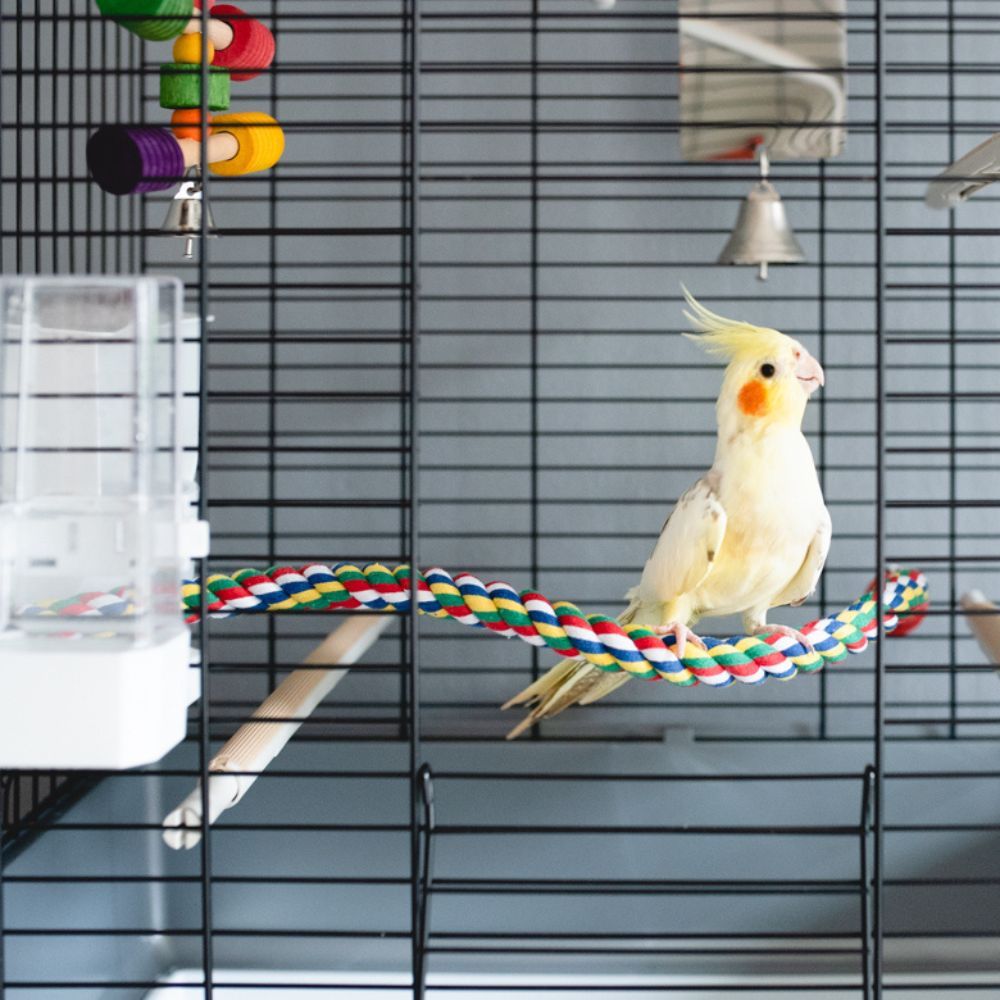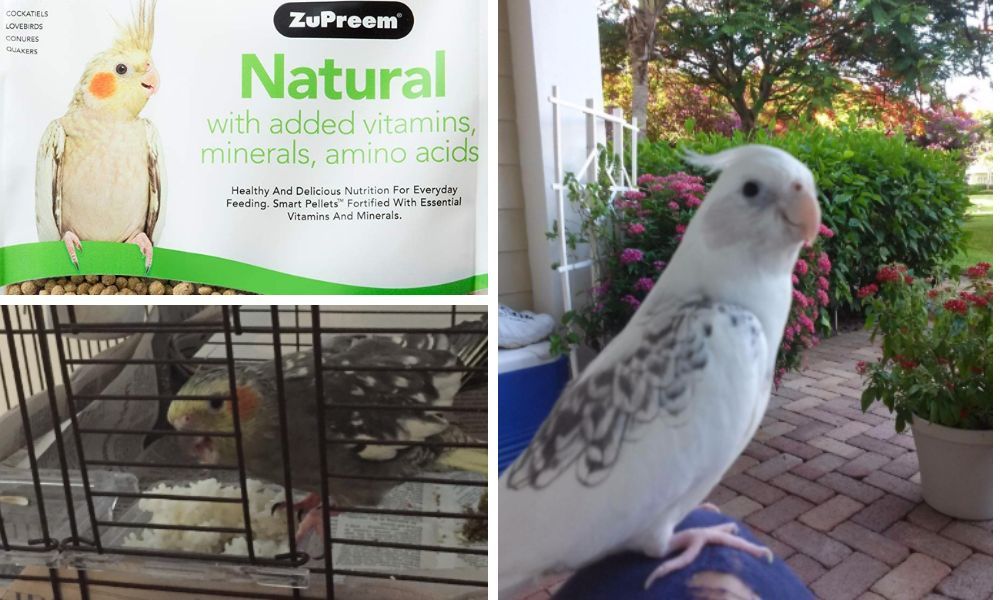The Unique Characteristics of the Yellow Cockatiel: A Guide
Discover the enchanting world of the Yellow Cockatiel, a bird known for its white to light-yellow feathers, and expressive orange cheek patches.

Cockatiels, with their charming personalities and striking features, have become one of the most beloved pet birds worldwide. Among the various color mutations, the yellow cockatiel stands out with its vibrant plumage and captivating appearance. This article delves into the world of these sunny-feathered friends, exploring their unique traits and what makes them a favorite among bird enthusiasts.
Key Takeaways:
- The yellow cockatiels are a result of the second cockatiel mutation known as the lutino gene.
- Male and female cockatiels can be distinguished by their color patterns and behaviors.
- Proper care, including a suitable nest box and diet, is essential for maintaining the health and happiness of a cockatiel.
A Splash of Sunshine: The Lutino Cockatiel
The lutino cockatiel is one of the most popular color mutations in the aviculture world. This gorgeous lutino cockatiel is characterized by its bright yellow feathers and contrasting red eyes. The lutino gene removes the gray pigment in the feathers, resulting in a bird that ranges from white to light yellow, with the yellowish tint being more prominent in certain areas like the yellow crest and yellow face.
Unlike the normal grey cockatiel, which is primarily grey with bright orange cheek patches, the lutino's plumage is a stunning display of yellow and white. The lutino pearl, also known as the pearl pied, is a variation that combines the lutino mutation with the pearl pattern, creating a bird with a light yellow body and scattered white markings.

Distinguishing Males from Females
Identifying male and female cockatiels can be quite intriguing. Male lutino cockatiels typically have a more vibrant hue with brighter yellow feathers and more pronounced orange cheeks. In contrast, female pearl cockatiel may exhibit a softer color palette with less intense facial feathers covering. Behaviorally, males are often more vocal and may be more inclined to talk cockatiels, while females can be more reserved.
During the breeding season, these differences become more evident. Males may display more prominently and sing to attract a mate, while females might start looking for a suitable nest box within the bird cage to lay their eggs.

The Second Cockatiel Mutation: A Genetic Perspective
The lutino gene responsible for the yellow cockatiels was first observed in captivity and is considered the second cockatiel mutation after the pied mutation. This recessive gene alters the melanin production, allowing the yellow and orange pigments to dominate the cockatiel's plumage. The lutino cockatiel's red eyes are another distinctive feature, as the lack of melanin in the eyes gives them a reddish appearance.
This mutation has been a significant development in the breeding of cockatiels, offering a variety of color mutations for enthusiasts to admire. From the cinnamon cockatiel with its warm, light grey tones to the striking albino with pure white plumage, the genetic diversity within the species is truly remarkable.

Habitat and Care: Ensuring a Happy Life
Yellow cockatiels, like other parrots, require a spacious bird cage that allows them to stretch their long tails and wings. A well-constructed nest box is also crucial for breeding pairs. The cage should be equipped with perches, toys, and a balanced diet to keep these pet birds healthy and entertained.

The environment of a cockatiel should mimic their natural habitat as much as possible. In the wild, these birds are part of the cockatoo family and are native to the Australian region, where they thrive in open country that offers plenty of space to fly and forage.

The Alluring Beauty of the Orange Cheek Patch
The orange cheek patch is one of the most captivating features of the yellow cockatiels, setting it apart as a beautiful pet bird. This vibrant splash of color is like a signature, unique to the cockatiel's plumage within the parrot family. The intensity of the orange can vary, often more vivid in a male cockatiel, and serves as a visual cue for identification and attraction. These cheek patches are not just for show; they play a crucial role in the social dynamics of these birds, acting as indicators of health and vitality during mating displays.
In the wild type, the orange cheek patch contrasts starkly against the yellow head and the grey body, creating a striking appearance. However, in captivity, breeders have developed variations where the cheek patch may appear less pronounced due to selective breeding for other traits. Regardless, these patches remain a prominent feature, often complemented by the cockatiel's prominent white flashes on the outer edges of the wing. The interplay of these colors contributes to the cockatiel's reputation as a visually appealing companion in the animal world.

Tail Feathers: The Telltale Indicators of a Cockatiel's Identity
Tail feathers in cockatiels are not only crucial for flight but also serve as indicators of the bird's identity and health. In a male cockatiel, the tail feathers are typically more elongated and may exhibit a more vibrant coloration, with the yellow and white shades standing out against the darker primary feathers. These feathers can also help owners and breeders determine the age and breed of the bird, as patterns and colors can change with maturity.
The tail feathers of a cockatiel are a marvel in the animal world, with the ability to fan out during courtship displays or when the bird feels threatened. The underside of these feathers often reveals a different pattern or color, such as the striking blue that can appear on the tail feathers of certain mutations. This blue is not commonly found in the wild type but can be seen in selectively bred cockatiels. The tail feathers, with their intricate designs and functions, underscore the complexity and beauty of the cockatiel's plumage, making them a fascinating subject for both enthusiasts and experts in aviculture.

Social Behavior and Interaction
Cockatiels are known for their social nature and the yellow cockatiel is no exception. They enjoy the company of other birds and humans alike. In the wild, they are often seen in flocks, and in captivity, they can form strong bonds with their owners. Interaction is key to their well-being, so spending time talking and playing with your cockatiel is essential.
When considering a second cockatiel mutation for companionship, it's important to introduce the new bird slowly to ensure compatibility. Male and female cockatiels can live harmoniously together, but their personalities and temperaments should be compatible for a peaceful coexistence.
The Role of Diet in Color and Health
The vibrant color of the yellow cockatiel's feathers can be influenced by their diet. Foods rich in carotenoids can enhance the bright yellow and orange hues in their plumage. A diet consisting of seeds, pellets, fruits, and vegetables will not only maintain the color but also ensure overall health.

Supplementation with vitamins and minerals is also crucial, especially for breeding females that need extra calcium for egg production. Always provide fresh water and avoid foods that are toxic to birds, such as avocado, chocolate, and caffeine.

The Yellow Cockatiel in Aviculture
The yellow cockatiel has made a significant impact on the aviculture world. Breeders like Cliff Barringer have dedicated their lives to understanding and propagating these beautiful pet birds. The popularity of the yellow cockatiel has grown exponentially since its first appearance in the Florida Parrot Jungle in the 1950s.
Today, these birds are celebrated for their friendly demeanor and striking appearance. They have become a staple in bird shows and competitions, where their various color mutations, including the lutino pied and pearl pied, are showcased.
Health Concerns and Lifespan
With proper care, yellow cockatiels can live for 15 to 20 years. However, they are susceptible to certain health issues, such as fatty liver disease and obesity, which can be mitigated with a proper diet and exercise. Regular veterinary check-ups are important to catch any potential problems early.
Genetic mutations can sometimes lead to health challenges. For instance, the lutino gene can be associated with baldness and other feather issues. It's crucial to obtain birds from reputable breeders who prioritize the health and well-being of their cockatiels.

Summary
The yellow cockatiel, with its bright yellow feathers and endearing personality, is a delightful addition to any home. Understanding their unique characteristics, from the lutino gene to their social behavior, is key to providing them with a fulfilling life. By offering proper care, a nutritious diet, and plenty of love, you can enjoy the company of these beautiful pet birds for many years to come.

FAQ Section
Q: How can I tell if my yellow cockatiel is male or female? A: Male lutino cockatiels often have brighter yellow feathers and more prominent orange cheeks compared to females. Males may also be more vocal and exhibit different behaviors, especially during breeding season.
Q: What should I feed my yellow cockatiel to maintain its color? A: A balanced diet rich in carotenoids, including seeds, pellets, fruits, and vegetables, can help enhance the bright yellow and orange colors in your cockatiel's plumage. Avoid toxic foods and provide fresh water daily.
Q: How long do yellow cockatiels live? A: With proper care, a yellow cockatiel can live for 15 to 20 years. It's important to provide a healthy diet, regular exercise, and veterinary care to ensure a long and happy life for your pet bird.

